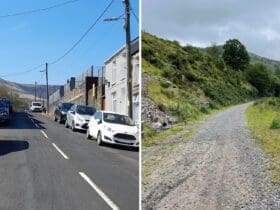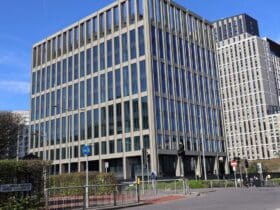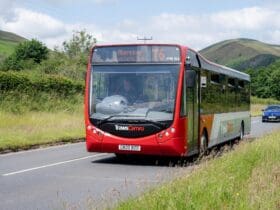Cardiff Capital Region City Deal in collaboration with Welsh Government and Transport for Wales has identified a proposed £50 million programme of local transport schemes to support the implementation of the South Wales Metro.
[aoa id=”1″]
Phase 1 of The Metro Plus Regional Transport Authority (RTA) Programme could see each Local Authority within South East Wales receive a £3m share to implement schemes in their area.
The programme of schemes proposed include:
- The creation of ‘interchanges’ that incorporate all modes of transport, acting as key hubs for travel
- Enhanced Park and Ride facilities, complete with electric charging points
- New and extended Metro networks that will open up and enable improved access to new and existing activities for work, training, education, culture, retail and leisure
Phase 1 of Metro Plus will see a £15m investment from Cardiff Capital Region City Deal, with a potential co-investment of £15m from Welsh Government. The remaining £20m will be sourced through local developer contributions, private sector investment and other contributions such as Council capital funds. Programme delivery would commence in 2019 and be complete by 2022.
[/aoa]
Proposed schemes include:
- the creation of a 3-4 mile rail link from Abertillery to Ebbw Valley at Aberbeeg, including a Park and Ride for 100 vehicles
- the provision of a new transport interchange for Caerphilly, on the site of the current bus and rail stations, complete with electronic information, electric vehicle charging for buses and a larger Park and Ride facility.
- the creation of a Transport Hub at Porth, which will house a seven bay bus interchange, taxi rank and cycle racks, with direct access to the rail station platforms and the Park and Ride.
- the development of bus and rail interchange at Barry, complete with four to five bus bays, provision for taxis and the potential extension of the existing Park and Ride site
- implementation of a Park and Ride facility at Pyle as part of the development of an integrated transport hub that serves the local community and the nearby settlements of Porthcawl, Kenfig Hill, Cefn Cribwr and Cornelly
- development of a new bus interchange and link between bus station and rail station within Merthyr Tydfil, as well as the creation of a Park and Ride facility at Pentrebach
- the provision of an additional 150-200 space car park on the south side of Severn Tunnel Junction station, complete with 40 additional bike and ride spaces, safer walking and cycling access, a revamped bus-rail interchange, electric vehicle charging spaces and an improved station building
- the provision of a Park and Ride facility at Pontypool and New Inn Station with a minimum of 200 spaces including electric vehicle charging
- improvements to the Newport to Cardiff bus corridor to increase bus use and improve journey times, along with the introduction of a Park and Ride facility to the east of Newport
- a series of sustainable and active travel packages including for Cardiff, including: new bus priority measures, the installation of a Central Cycle Superhighway, pedestrian crossing improvements, traffic calming measures, air quality improvements, as well as improved cycle parking.
The key outcomes of the Metro Plus programme include: improvements in accessibility, improvements for areas of depravation, accommodation of future population change, supporting thriving towns and communities, as well as improving all modes of transport.
The £738million Metro project is the cornerstone of the £1.2billion City Deal, creating a transport infrastructure which will help enable the social and economic objectives of the Cardiff Capital Region.


The Metro Plus Programme aims to maximise the delivery of the key outputs set out in the Metro over a 30 years period. Key outputs include:
- Support the creation of 7,000 jobs
- Contribute an additional £4bn to the regional economy;
- Deliver a one-off construction impact from Metro and contingent developments of £4bn
- Environmental and Sustainability Benefits – through modal shift and reduced car journeys, road congestion and CO2 emissions
- Support over 80,000 daily passengers vs 40,000 today, contributing to greater use of public transport
- Increase by 60%, the number of people who can easily access the regional public transport network; this will benefit both commuters by increasing their employment choices and employers by increasing their catchment area, reducing churn in recruitment and improving staff retention
- Commuting benefits from generalised journey time savings of approx. £30m/yr.
Councillor Huw David, Chair of the CCR Transport Authority, and Leader of Bridgend County Borough Council, said:
“The schemes proposed through the Metro Plus programme have been drawn from the priorities of individual Councils and mirror the ‘Metro spine’ – creating both short and longer-term opportunities for communities throughout South East Wales.
“The ten proposed schemes within Phase 1 of the wider Metro Plus programme represent a diverse range of projects, with transport as the central component for enabling growth, expansion and opportunity to be unlocked.
“Metro Plus provides the potential to develop a whole programme of activity that contributes to, complements and enhances Metro and mobility delivery in the region.”
Councillor Andrew Morgan, Chair, Cardiff Capital Region said:
“The Metro Plus programme is a joint project with Welsh Government and will go a long way in enhancing connectivity for the whole region.
“Phase 1 will see a host of benefits for all ten local authority regions within the near future, which will support and enhance the wider Metro programme.”
Kellie Beirne, Director of the Cardiff Capital Region, said:
“The South Wales Metro is a major ambitious ‘modal shift’ project connecting people and places and enhancing the functional economic geography of the region. It is, however, a medium to long term ambition.
“Metro Plus will support the rapid implementation of a series of more localised measures, which will help to deliver sustainable economic development, by connecting people, communities and business to employment, services, facilities and markets through reliable, resilient infrastructure.”








Leave a Reply
View Comments